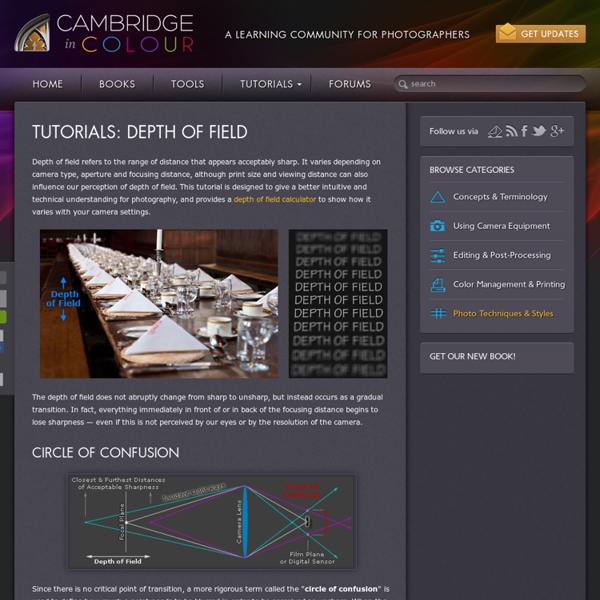Understanding Depth of Field in Photography

How to Setup Canon 7D to take HDR shots / Bracketed Exposure
Ok so you have heard the word HDR, Bracketed Exposure and Auto Exposure Bracketing. But what do they mean and how can you use your Canon 7D to take these sorts of shots. Ok first things first what is HDR, Bracketed Exposure and Auto Exposure Bracketing. HDR stands for High Dynamic Range, and it is a technique in which you merge several shots together all with a different dynamic range or exposure. which let you create the HDR effect or final images, check out the excellent video tutorials by Just4Photographers.com on using Photosjop. One of my favourite HDR photographers has to be Trey Ratcliff I think his work is astounding. A fantastic E-Book I recently bought How to do Trick Photography by Evan Sharboneau is amazing, is really takes some of ym article concepts to a whole new level, adn I recommend downloading and giving it a read, you will not regret it. HDR (High Dynamic Range), Bracketed Exposure, Auto Exposure Bracketing on the Canon 7D So before we can create any HDR 1. a. c. 2. a. c.
Long Exposure Night Photography – Step By Step Guide | Night Photography by Adam Currie
One of the areas of photography that people get wrong is night photography, most people assume that you just use the flash and everything is fine, or that there is one group of settings for night photography. OK, this is fine for the odd snap shot of your friends or on a night out. But, if you want to get creative and make stunning images at night you’re going to have to do a lot more than just turn the flash on, when you have finished reading this you’ll be able to create images like this: In this article I am going to show you how to use a technique called Long Exposure. Say good bye to harsh lighting and dark backgrounds. Firstly, let’s pick a subject. Equipment Required The following list links to the equipment that I recommend and use. Now let’s get down to business. Setting Up Your Shot Switch your camera to manual. Now you have the camera focused you can proceed to compose the shot. Tip: Wide angles create a bigger impact than longer focal lengths. Setting The Correct Exposure
Related:
Related:



